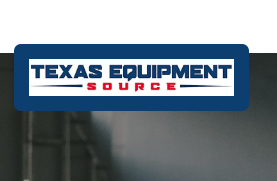Kratom, a popular herbal product with a range of effects, is becoming more widely available in markets around the world. As its popularity continues to grow, so does the need to maintain the product’s quality and safety. One of the most important factors in ensuring the integrity of Kratom is packaging. Proper Kratom packaging is vital in protecting the product from contamination, preserving its potency, and extending its shelf life. In this article, we’ll explore different aspects of Kratom packaging that help prevent contamination and keep the product in top condition.
Understanding the Importance of Kratom Packaging
Packaging plays a crucial role in protecting Kratom from various environmental factors that could compromise its quality. Kratom, like many herbs, is sensitive to light, moisture, air, and temperature. When exposed to these elements, it can lose its potency, flavor, and even become unsafe for consumption. Therefore, proper packaging ensures that the product remains effective and safe for users.
The primary function of Kratom packaging is to create a barrier that prevents exposure to harmful external factors. This barrier can protect Kratom from contaminants such as bacteria, fungi, dust, and moisture, all of which could alter the chemical composition of the product. It also helps to preserve the natural compounds within Kratom, like alkaloids, which are essential for its effects.
Furthermore, good packaging practices help businesses build trust with their customers. Packaging that is secure, tamper-evident, and informative shows that a brand values quality and safety. When customers feel confident that the product they are purchasing is protected from contamination, they are more likely to become repeat buyers.
Types of Contamination That Kratom Packaging Prevents
There are several types of contamination that Kratom packaging needs to prevent in order to ensure the product’s safety and quality. Contaminants can come from a variety of sources, such as air, moisture, or human contact. Each of these can negatively impact Kratom in different ways.
Moisture Contamination:
Moisture is one of the most significant threats to Kratom. When exposed to moisture, Kratom can quickly begin to spoil, lose its potency, or even grow mold. This is why airtight packaging is essential to keeping Kratom dry and fresh. If Kratom absorbs moisture, its chemical makeup can change, reducing the desired effects. Packaging materials such as Mylar bags, vacuum-sealed pouches, and containers with desiccants are great for preventing moisture exposure.
Air Contamination:
Air is another common contaminant. Oxygen can cause oxidation, which degrades the alkaloids in Kratom. This degradation leads to a decrease in potency and effectiveness. Packaging methods that minimize exposure to air, like vacuum sealing, are effective in reducing this risk. Oxygen-absorbing materials can also be included in packaging to further extend the shelf life of Kratom.
Light Contamination:
UV light can break down many of the active compounds in Kratom. This is why opaque or dark-colored packaging is often used for Kratom. Clear packaging, though it may seem convenient for customers, should be avoided as it allows light to penetrate the packaging and degrade the product. Dark plastic containers or aluminum foil pouches are excellent choices for light-sensitive products like Kratom.
Bacterial and Fungal Contamination:
Since Kratom is a natural product, it is vulnerable to bacterial and fungal growth if not properly packaged. When Kratom is exposed to the air, bacteria and fungi can easily invade and multiply, leading to contamination. Using airtight, moisture-proof packaging with antimicrobial properties can help minimize these risks. Additionally, including a desiccant packet within the packaging can absorb any residual moisture that may promote bacterial or fungal growth.
The Role of Material Selection in Kratom Packaging
The materials used for Kratom packaging are essential to protecting the product from contamination. Different materials offer unique benefits and come with their own limitations, so it’s crucial to select the right type for your product.
Plastic Packaging:
Plastic containers, bags, and pouches are commonly used for Kratom packaging. They are lightweight, cost-effective, and versatile. However, it’s important to choose the right kind of plastic. Low-quality plastic can allow air and moisture to seep in, compromising the quality of the Kratom inside. High-density polyethylene (HDPE) and polypropylene (PP) are some of the most durable plastics that provide good protection against contaminants.
Mylar Packaging:
Mylar is a type of polyester film that is often used for Kratom packaging due to its excellent barrier properties. Mylar pouches are moisture-resistant, oxygen-resistant, and provide a good defense against UV light. These pouches are especially popular for storing Kratom powder or capsules. Mylar bags often come with a zip-lock feature, making them easy to reseal for repeated use.
Glass Containers:
Glass is a premium packaging option that offers an airtight seal and excellent protection from contaminants. Glass containers are highly resistant to moisture, and they do not react with the product inside, preserving the natural quality of Kratom. However, glass packaging is heavier and more fragile compared to plastic or Mylar options, which makes it less practical for shipping.
Aluminum Packaging:
Aluminum is another excellent option for Kratom packaging. It provides an airtight seal, is resistant to UV light, and helps maintain the product’s potency. Aluminum foil pouches or cans are commonly used for packaging Kratom powder. They offer a high level of protection and can be easily sealed to prevent contamination.
The Importance of Sealing in Kratom Packaging
Sealing is one of the most important aspects of Kratom packaging. Properly sealed packaging prevents air, moisture, and contaminants from entering and damaging the product. Without a good seal, even the best-quality packaging materials would be ineffective in keeping Kratom safe.
There are different sealing methods available, and each has its advantages. Heat sealing is one of the most common methods used for packaging Kratom. This process involves using heat to melt the edges of a plastic bag or pouch, fusing them together to form a secure seal. This creates an airtight and tamper-evident package that helps protect the contents.
Vacuum sealing is another effective method for sealing Kratom packaging. This involves removing air from the package before sealing it, creating a vacuum that prevents oxidation and moisture contamination. Vacuum-sealed packaging is especially beneficial for preserving the potency and freshness of Kratom for extended periods.
In addition to heat and vacuum sealing, some Kratom packaging includes tamper-evident features, such as shrink bands or seals that show if a package has been opened. These features provide an added layer of security and reassurance to customers.
Labeling and Information on Kratom Packaging
While protecting Kratom from contamination is the primary goal of packaging, labeling is another critical aspect that should not be overlooked. Proper labeling provides customers with important information about the product and can help prevent misuse or overconsumption. Additionally, clear labeling can improve the brand’s credibility and trustworthiness.
Here are a few key points that should be included on Kratom packaging:
-
Product Information: List the type of Kratom (e.g., Red Bali, Maeng Da) and the form (e.g., powder, capsules). Include the weight and quantity of the product.
-
Dosage Recommendations: Provide clear instructions on how to safely consume the Kratom. Include suggested serving sizes and any precautions.
-
Storage Instructions: Indicate the proper way to store Kratom to maintain its freshness, such as keeping it in a cool, dry place.
-
Expiration Date: Include an expiration or “best by” date to help customers ensure they are consuming the product while it’s at its best.
-
Certifications: If the Kratom is organic, sustainably sourced, or tested for purity, include certification marks to help customers make informed decisions.
Sustainable and Eco-Friendly Kratom Packaging
In recent years, there has been a growing demand for eco-friendly packaging across all industries, including the Kratom market. Many consumers are becoming more conscious of their environmental impact and prefer products that use sustainable packaging materials.
Eco-friendly Kratom packaging can include materials such as biodegradable plastics, recycled paper, and compostable pouches. These packaging options can help reduce waste and promote a more sustainable approach to product packaging. Many companies are now choosing packaging solutions that can be recycled, reducing their carbon footprint while also meeting customer demand for green packaging.
Adopting eco-friendly practices in Kratom packaging doesn’t just benefit the environment; it can also be a strong selling point for customers who value sustainability. However, it is important to balance sustainability with functionality. The packaging must still provide adequate protection to prevent contamination, while also being kind to the planet.
The Future of Kratom Packaging
As the Kratom market continues to grow, the need for better, more innovative packaging solutions will become even more apparent. Advances in packaging technology, such as smart packaging that includes humidity sensors or QR codes that link to product information, are likely to become more widespread.
Additionally, as regulations surrounding Kratom continue to evolve, packaging will play a crucial role in ensuring compliance with health and safety standards. Kratom companies will need to stay informed about changes in packaging regulations to ensure their products remain safe, legal, and high-quality.
By investing in the right packaging materials and methods, Kratom producers can safeguard their products from contamination, preserve their potency, and create a better experience for their customers.
Conclusion
In conclusion, Kratom packaging is essential in maintaining the quality, safety, and effectiveness of the product. By using the right materials, sealing techniques, and labeling practices, businesses can ensure their Kratom remains free from contamination and retains its natural properties. As the market grows, investing in quality packaging will continue to be a key factor in success.







0 Comments